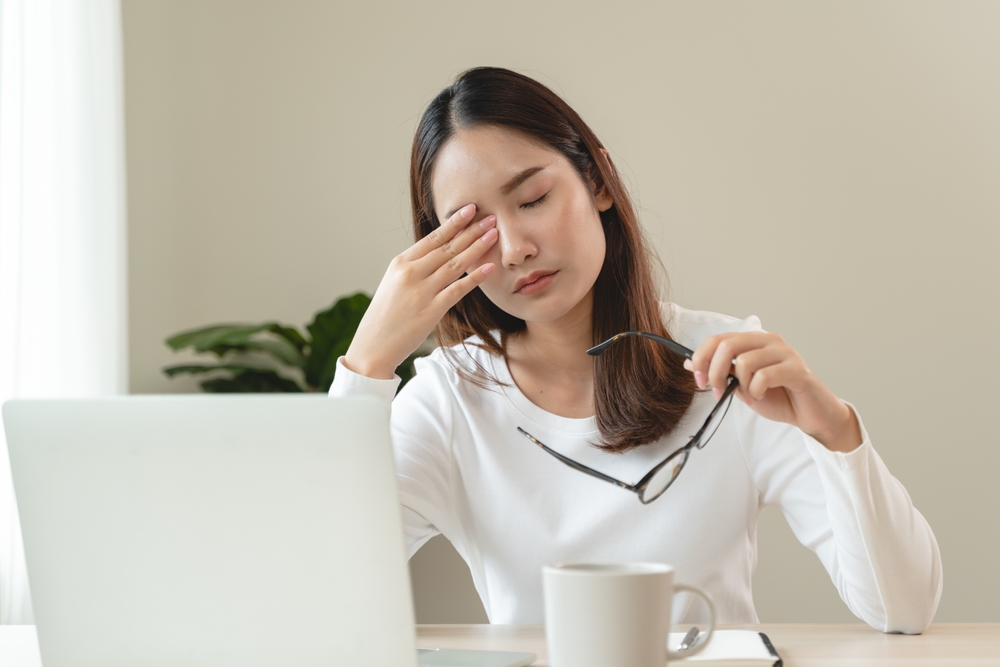
In our increasingly connected world, it’s almost impossible to avoid digital screens. Whether you’re working on a computer, scrolling through your phone, or unwinding with a tablet, screen time is a part of daily life for most people. However, this constant exposure can take a toll on your eyes. At Eye Care Associates of Princeton, we’ve seen a noticeable rise in patients experiencing dry eye symptoms, and prolonged screen use is often a major contributor. Understanding how digital devices affect your eyes is the first step toward finding relief and protecting your long-term eye health.
What Is Dry Eye?
Dry eye occurs when your eyes either don’t produce enough tears or the quality of your tears isn’t sufficient to keep your eyes properly lubricated. As a result, you may experience uncomfortable symptoms like stinging or burning sensations, redness, blurred vision, sensitivity to light, and a gritty feeling in your eyes. These symptoms can interfere with your daily comfort and even make it difficult to focus at work or enjoy your usual activities.
How Screen Time Contributes to Dry Eye
Digital screens are a major culprit when it comes to dry eye. When we look at screens, we tend to blink less often - sometimes up to 50% less than normal. Blinking is essential because it helps spread tears evenly across the surface of the eyes. Reduced blinking means tears evaporate more quickly, leaving your eyes dry and uncomfortable. In addition, the blue light emitted by screens may contribute to digital eye strain, making symptoms of dry eye even worse.
Tips for Prevention
While it may be difficult to avoid digital devices altogether, you can take steps to reduce your risk of dry eye:
Practice the 20-20-20 Rule: Every 20 minutes, take a 20-second break and look at something 20 feet away. This gives your eyes a chance to relax and encourages blinking.
Adjust Your Screen Position: Keep your screen at eye level and about an arm’s length away. Lowering your screen slightly can help reduce the width of your eyelid opening, minimizing tear evaporation.
Use Artificial Tears: Lubricating eye drops can provide temporary relief. Choose preservative-free options if you use them frequently.
Improve Your Environment: Use a humidifier to add moisture to the air, especially in heated or air-conditioned rooms.
When to See Your Optometrist
If you’re experiencing persistent dry eye symptoms, it’s important to schedule a comprehensive eye exam. Only a proper diagnosis can determine the underlying cause of your dry eye and guide effective treatment. We offer advanced solutions for dry eye, including Intense Pulsed Light (IPL) therapy. IPL is a non-invasive treatment that targets inflammation and improves the function of the glands responsible for producing healthy tears. Many patients experience significant, long-lasting relief after IPL therapy.
Contact Eye Care Associates of Princeton for Dry Eye Relief
Digital screens are a part of modern life, but they do not have to leave you with uncomfortable or irritated eyes. By adopting healthy screen habits and seeking timely professional care, you can keep your eyes comfortable and healthy, even with a busy digital lifestyle.
If you’re struggling with dry eye symptoms during screen time, contact Eye Care Associates of Princeton to schedule an evaluation and discover the latest treatments. Visit our office in Princeton, New Jersey, by call (609) 536-1017 to book an appointment today.








